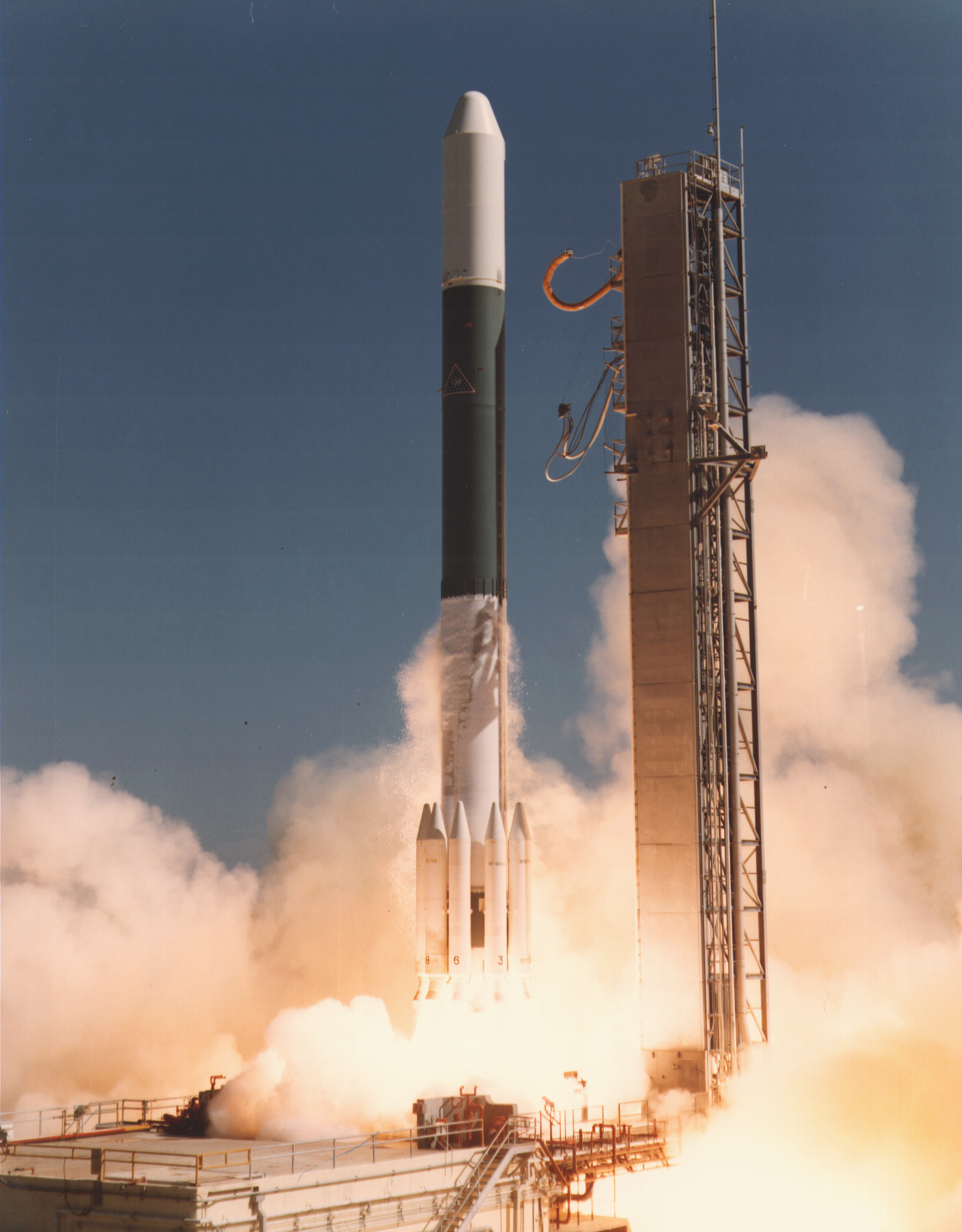
Delta 2910
In-activeMcDonnell Douglas (MDC)
Jan. 22, 1978
Description
The Delta 2000 series was an American expendable launch system which was used to conduct forty-four orbital launches between 1974 and 1981. It was a member of the Delta family of rockets. Several variants existed, which were differentiated by a four digit numerical code.
Specifications
-
Stages
3 -
Length
35.0 m -
Diameter
2.44 m -
Fairing Diameter
2.44 m -
Launch Mass
131.0 T -
Thrust
2560.0 kN
Family
-
Name
Delta 2910 -
Family
― -
Variant
2910 -
Alias
― -
Full Name
Delta 2910
Payload Capacity
-
Launch Cost
― -
Low Earth Orbit
― -
Geostationary Transfer
Orbit
― -
Direct Geostationary
― -
Sun-Synchronous Capacity
―
McDonnell Douglas
Commercial
None
MDCNone
Delta 2910 | Nimbus 7
McDonnell Douglas | United States of AmericaVandenberg SFB, CA, USA
Oct. 24, 1978, 8:14 a.m.
Delta 2910 | Landsat 3
McDonnell Douglas | United States of AmericaVandenberg SFB, CA, USA
March 5, 1978, 5:54 p.m.
Delta 2910 | AE-E
McDonnell Douglas | United States of AmericaCape Canaveral SFS, FL, USA
Nov. 20, 1975, 2:06 a.m.
Delta 2910 | AE-D
McDonnell Douglas | United States of AmericaVandenberg SFB, CA, USA
Oct. 6, 1975, 9 a.m.
Delta 2910 | Nimbus 6
McDonnell Douglas | United States of AmericaVandenberg SFB, CA, USA
June 12, 1975, 8:12 a.m.
Electron
Raise and Shine (RAISE-4)
Rocket Lab Launch Complex 1B - Rocket Lab Launch Complex 1, Mahia Peninsula, New ZealandRAISE-4 (RApid Innovative payload demonstration Satellite-4) is a Japan Aerospace Exploration Agency (JAXA) satellite for on-orbit demonstrations of …
Kuaizhou 11
DEAR-5
Launch Area 95A - Jiuquan Satellite Launch Center, People's Republic of ChinaDEAR-5 is a commercial in-orbit payload and micro-gravity experiments hosting spacecraft developed by Chinese commercial company AZSPACE for various …
Long March 12
SatNet LEO Group 16
Commercial LC-2 - Wenchang Space Launch Site, People's Republic of ChinaA batch of Low Earth Orbit communication satellites for the Chinese state owned SatNet constellation operated by the China Satellite Network Group. …
Falcon 9
Starlink Group 6-90
Space Launch Complex 40 - Cape Canaveral SFS, FL, USAA batch of 29 satellites for the Starlink mega-constellation - SpaceX's project for space-based Internet communication system.
Falcon 9
Starlink Group 15-11
Space Launch Complex 4E - Vandenberg SFB, CA, USAA batch of 27 satellites for the Starlink mega-constellation - SpaceX's project for space-based Internet communication system.

